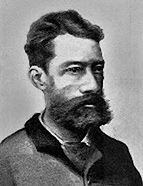

A significant part of his scientific work was his photography, at a time when it was really rare and expensive. Martins Sarmento was really open to new things and excited about the visible signs of progress, so he got into taking photos, which also needed a lot of study and money. As the latter aspect did not pose a problem for him, he left us a remarkable collection of photographs and photos that document his scientific interests, not only in the field of archaeology, but also in ethnography (E. Brito ed., Reimaginar Guimarães... 2012). With regard to the former, the fundamental role played by the images he captured in epigraphic research should be highlighted. Having become one of the most assiduous correspondents of Emílio Hübner (Guerra, “Emílio Hübner e os arqueólogos Portugueses ” [Emílio Hübner and Portuguese archaeologists]..., 2014, pp. 226-228), who was then working on the Supplementum to his vol. II of the Corpus Inscriptionum Latinarum , he often provided him with photographs of the inscriptions, a fundamental tool for analysing the documentation, thus overcoming many of the limitations of the more or less accurate tracings provided by other correspondents. If we take into account that Hübner himself did not have access to this expensive resource and that it was only many decades later that photography was defined as an essential component of the study of epigraphic documents, we can say that Sarmento was a true pioneer in this area of research. Although this aspect is usually overlooked, it has already been duly noted and is certainly one of the most prominent components of his scientific and “progressive” spirit.
This work is financed by national funds through FCT - Foundation for Science and Technology, I.P, in the scope of the projects UIDB/04311/2020 and UIDP/04311/2020.
